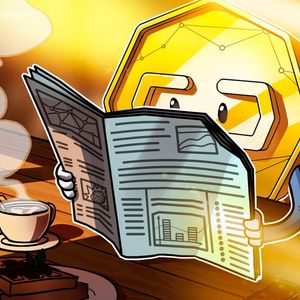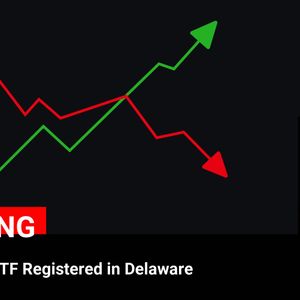In a move that sent ripples through the tech and investment world, Intel Capital, the venture investment arm of semiconductor titan Intel, announced its plan to spin off and operate independently. After 34 years as a cornerstone of corporate venture capital, this decision marks a significant turning point. For many, it signals the end of an era, recognizing Intel Capital’s pioneering role as arguably the first corporate venture capital firm. Founded nearly 35 years ago, the firm boasts an impressive portfolio, having backed nearly 2,000 companies, including enterprise tech giants like DocuSign, MongoDB, and Hugging Face. But what does this spin-off really mean for the future of Intel Capital and the broader venture landscape? Why the Spin-Off? Exploring the Rationale Behind Intel Capital’s Independence For Mark Rostick, Intel Capital’s vice president and senior managing director, this transition isn’t about endings, but rather about new beginnings. It’s a chance for the VC to forge its own path while retaining the advantages it enjoyed as a corporate venture capital entity. Rostick, a veteran of over two decades at the firm, recounts how a friend’s recommendation led him to Intel Capital in 1999, escaping a less fulfilling role as a tech licensing attorney. He was immediately drawn to the energy and ambition of the team. “You get to work with the smartest people in the world,” Rostick shared with Bitcoin World. “The hardest thing to do in business is to start something from nothing and get it to literally leave the ground. Those are the coolest people to hang out with because they’re doing something special. The combination of being able to use that training I had [combined] with working with people doing the hardest thing in business, it was irresistible for me.” His tenure at Intel Capital has been marked by substantial growth and impact. The firm has invested over $20 billion across more than 1,800 companies, achieving over 700 startup exits . The idea of becoming independent wasn’t sudden; Rostick reveals that spin-off discussions had occurred multiple times before. The core debate revolved around balancing increased agility and speed as an independent entity against the potential loss of benefits from its parent company. However, the momentum shifted in early 2024, solidifying into concrete plans by fall. Rostick and Anthony Lin, head of Intel Capital, focused on preparing the team for this significant shift. A key factor driving this decision was confidence in their track record. “We thought our track record merited attention from outside investors,” Rostick explained. “We had done really well, even while, you know, a lot of the venture industry hasn’t been unable to realize exits, we’d had some success doing that, so we felt like we were could position ourselves as a bit of an outlier there.” Astera Labs: A Shining Example of Successful Startup Exits and Strategic Timing Rostick highlighted Astera Labs’ successful exit as a crucial element in their timing. Intel Capital initially invested in Astera Labs, a semiconductor company, in 2018. By March 2024, Astera Labs went public with a $5.5 billion valuation, which has since surged to a $9.8 billion market cap, solidifying its position as one of 2024’s most successful venture-backed exits. This triumph served as compelling evidence for potential limited partners (LPs), demonstrating Intel Capital’s ability to make astute investments and generate returns, especially during a period of limited startup exits in the broader venture landscape. Industry data underscores this point. In 2023, U.S. venture-backed exits totaled $149.2 billion, significantly lower than previous years like 2019 ($312 billion) and far below outlier years like 2021 ($841 billion), according to PitchBook data. Navigating Change: Addressing Departures and Parent Company Dynamics The transition hasn’t been without its complexities. While Intel Capital projects confidence, reports of managing director departures – including veterans like Mark Lydon, Arun Chetty, Sean Doyle, and Tammi Smorynski – have surfaced, as Axios initially reported. These departures, though officially stated by an Intel Capital spokesperson as unrelated to the spin-off, occurred around the time these discussions gained momentum. Furthermore, the spin-off coincides with a period of upheaval at Intel itself. The unexpected retirement of former CEO Pat Gelsinger in December 2023, who was reportedly involved in spin-off discussions, and subsequent challenges like delays in the Ohio chip factory opening and the shelving of the Falcon Shores AI chip, paint a picture of a company in flux. The appointment of Lip-Bu Tan as the new CEO, rumored to be planning significant changes, adds another layer of intrigue. Despite these parent company dynamics, the Intel Capital spin off is proceeding as planned. The Future of Intel Capital: What to Expect Post-Spin-Off The firm anticipates achieving full independence by the third quarter of 2025. Rostick assures that the newly independent, yet-to-be-named venture capital firm will largely resemble the current Intel Capital. Intel will remain a key anchor investor, and the investment strategy will remain focused on early-stage startups within core sectors: AI, cloud computing, devices, and frontier tech, among others. Fundraising is expected to commence shortly after the formal spin-off. “We’ve socialized the idea with people, and feel like we’ve gotten a pretty good response,” Rostick noted. “We’re not naive. We know it’s going to be a difficult process.” Business as Usual: Intel Capital’s Continued Investment Strategy Ultimately, the market will determine the success of this new solo venture. However, Rostick emphasizes that for now, it’s business as usual. Intel Capital remains actively engaged: Investing in new opportunities : Continuously seeking promising startups. Maintaining the portfolio : Providing follow-on investments where strategically beneficial. Managing portfolio exits : Proceeding with exit strategies as planned. “When we make the switch over, we keep going at the same speed as we have been going today, this has always been the plan,” Rostick concludes. A New Era for Corporate Venture Capital? Intel Capital’s journey reflects the evolving landscape of corporate venture capital . As one of the earliest and most prominent CVCs, its spin-off raises questions about the future of this investment model. Will other corporate VCs follow suit, seeking greater autonomy? Or will Intel Capital’s move prove to be a unique case, driven by specific circumstances? The answers will unfold in the coming years, shaping the trajectory of tech investment and venture capital firm strategies. To learn more about the latest AI trends, explore our article on key developments shaping AI features.
 Stablecoin Issuer Circle Files for IPO
Stablecoin Issuer Circle Files for IPO Here’s what happened in crypto today
Here’s what happened in crypto today







